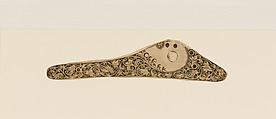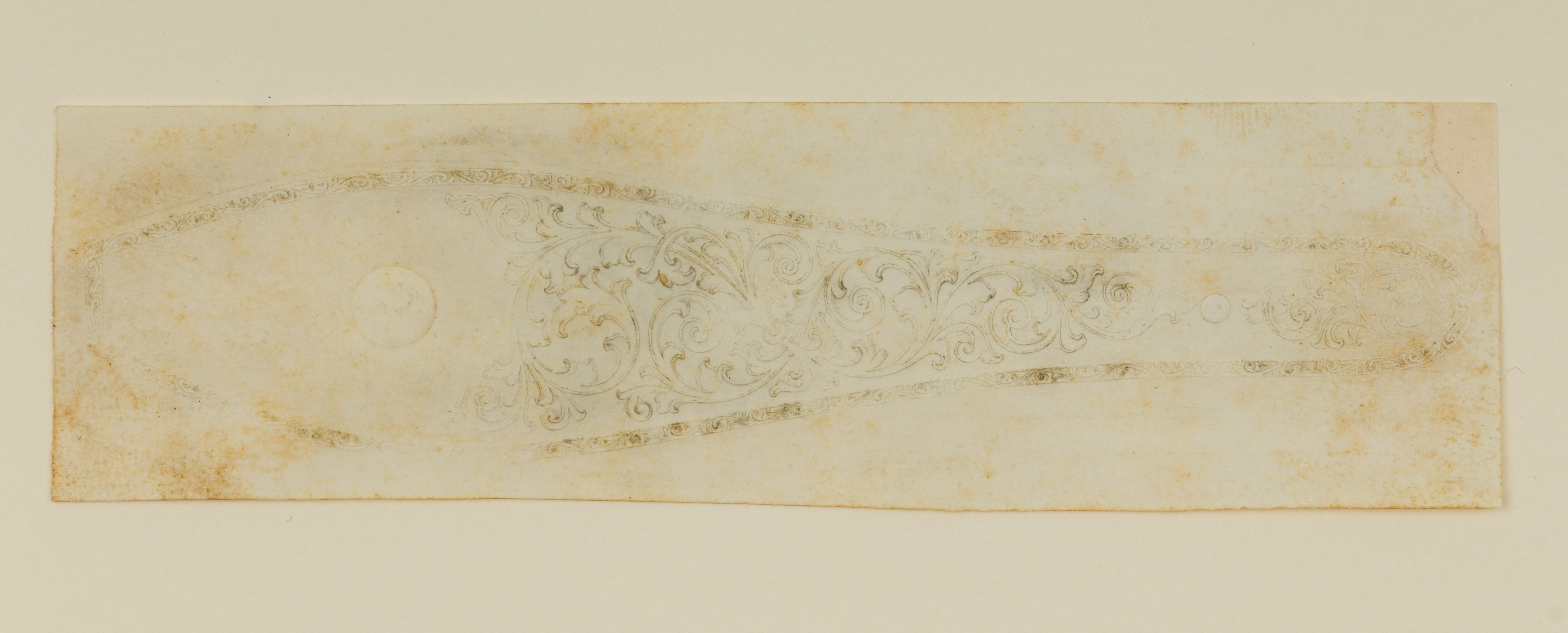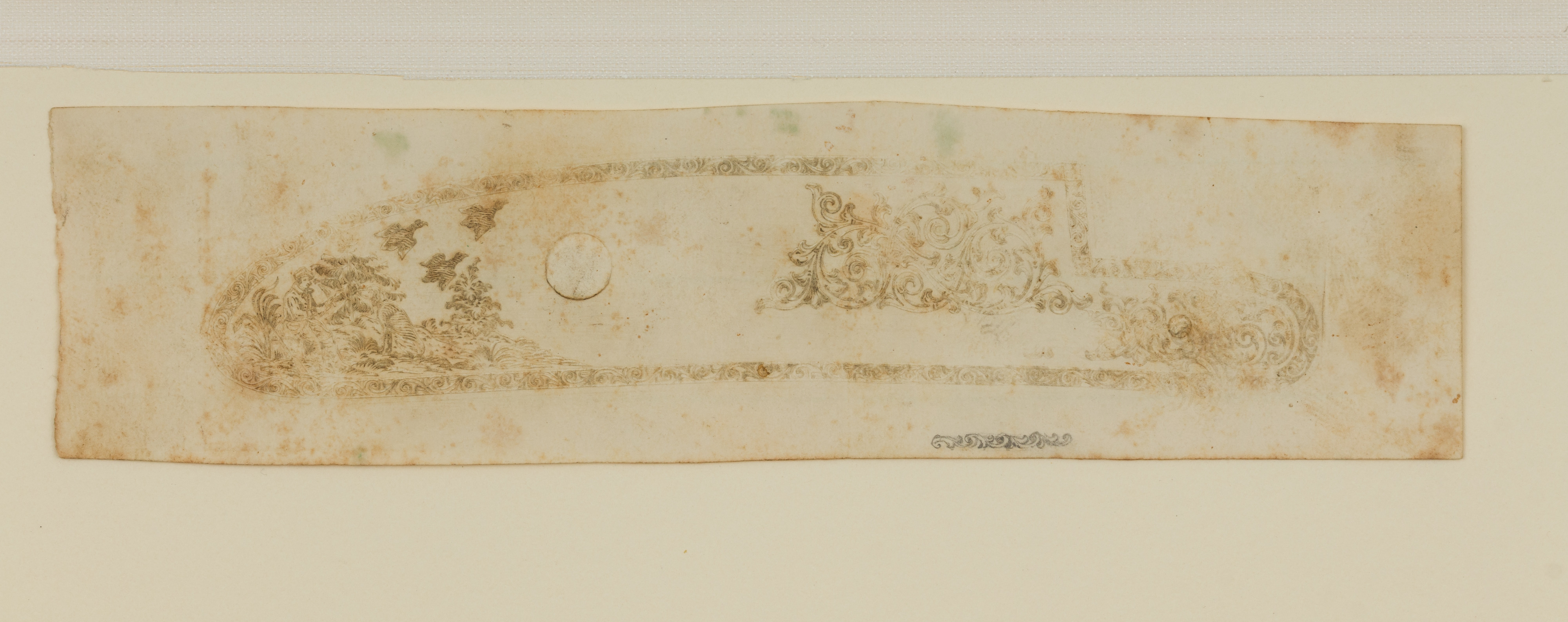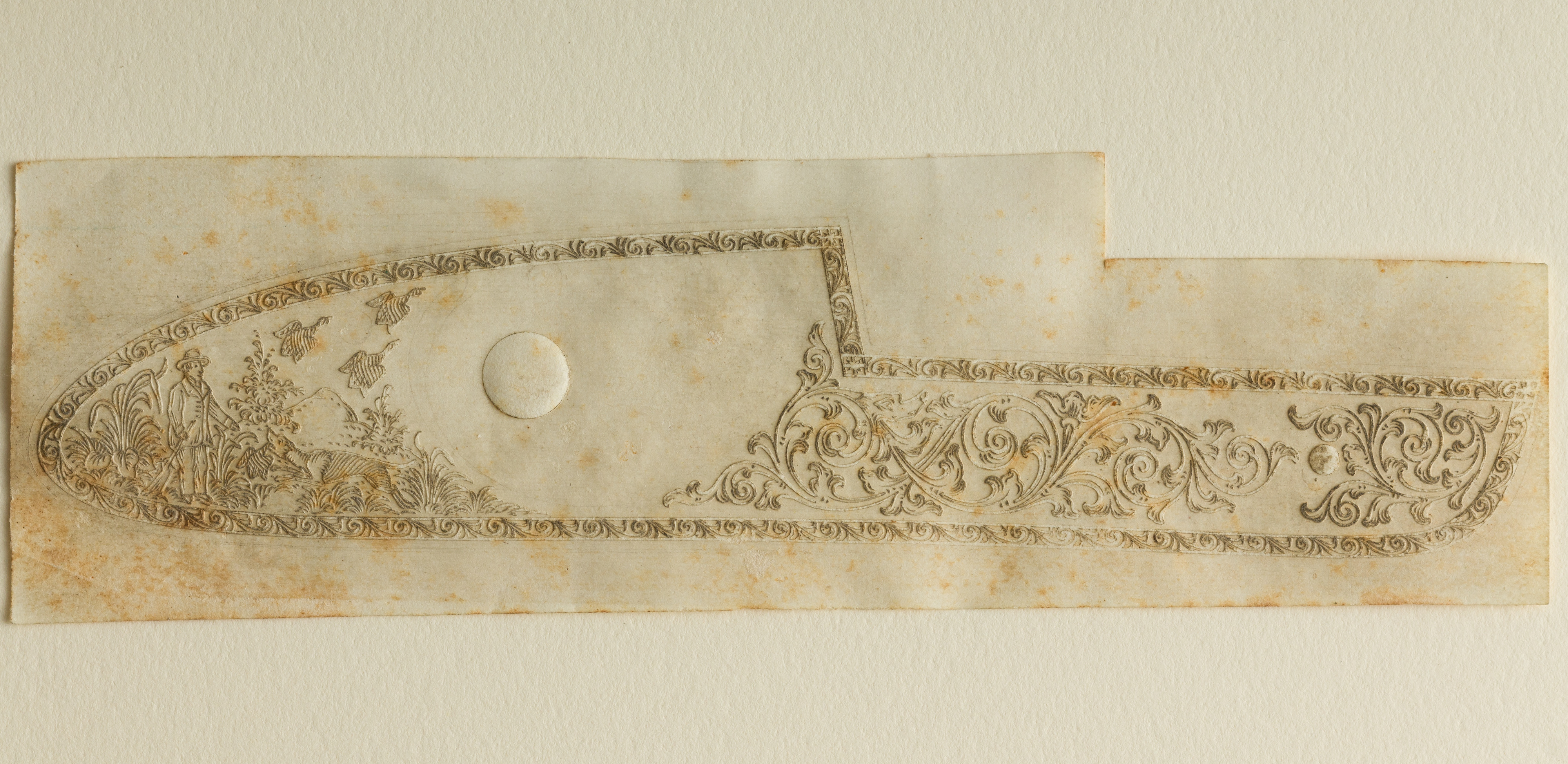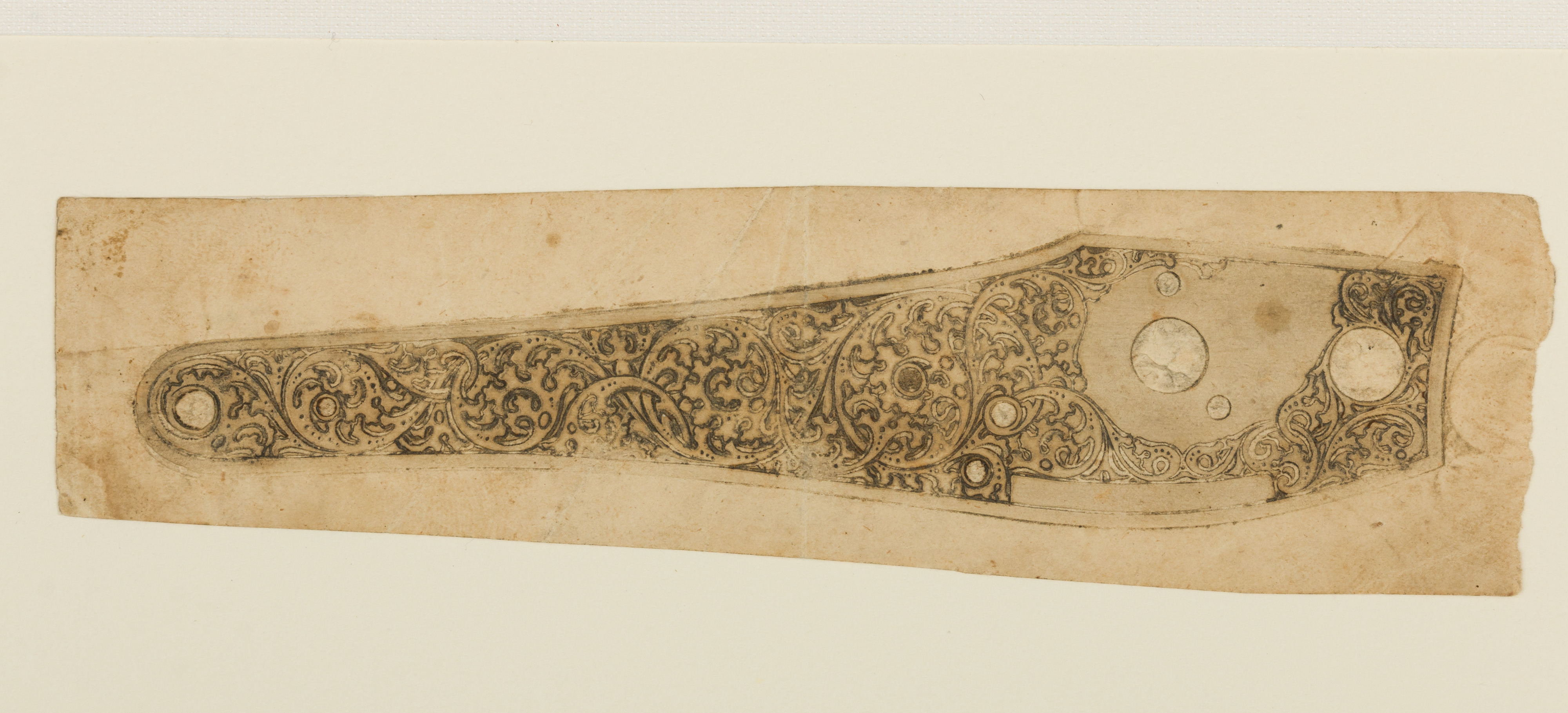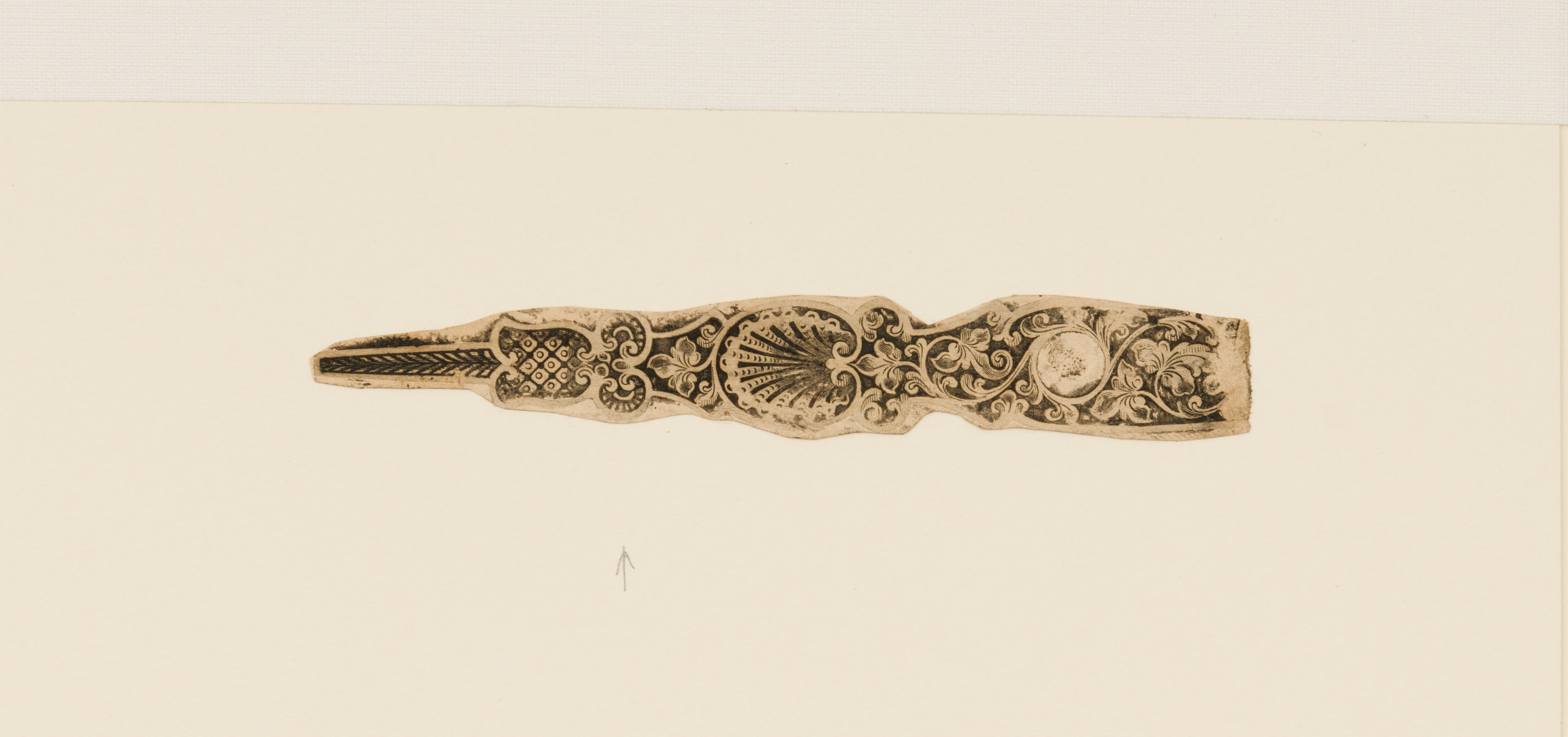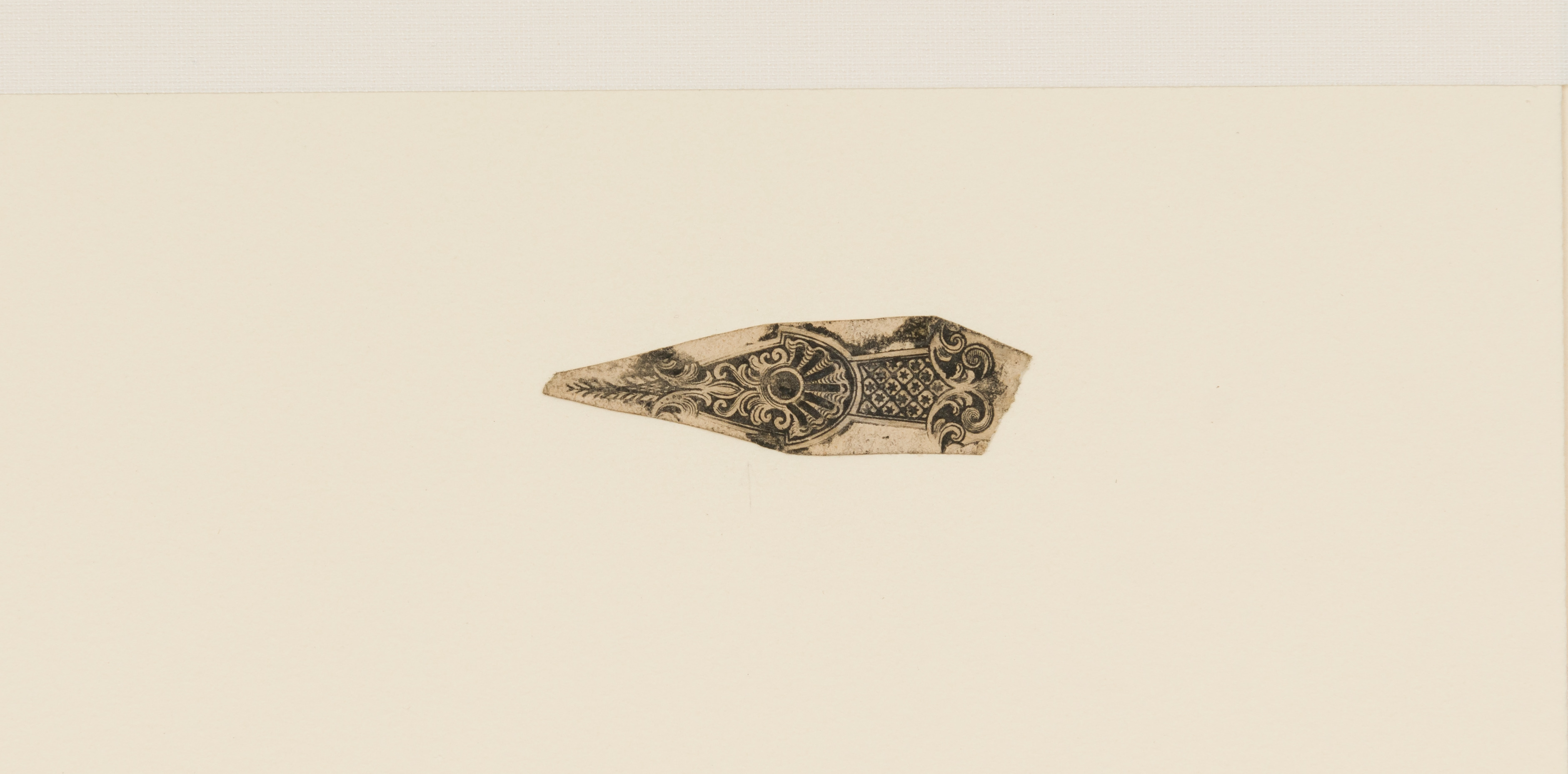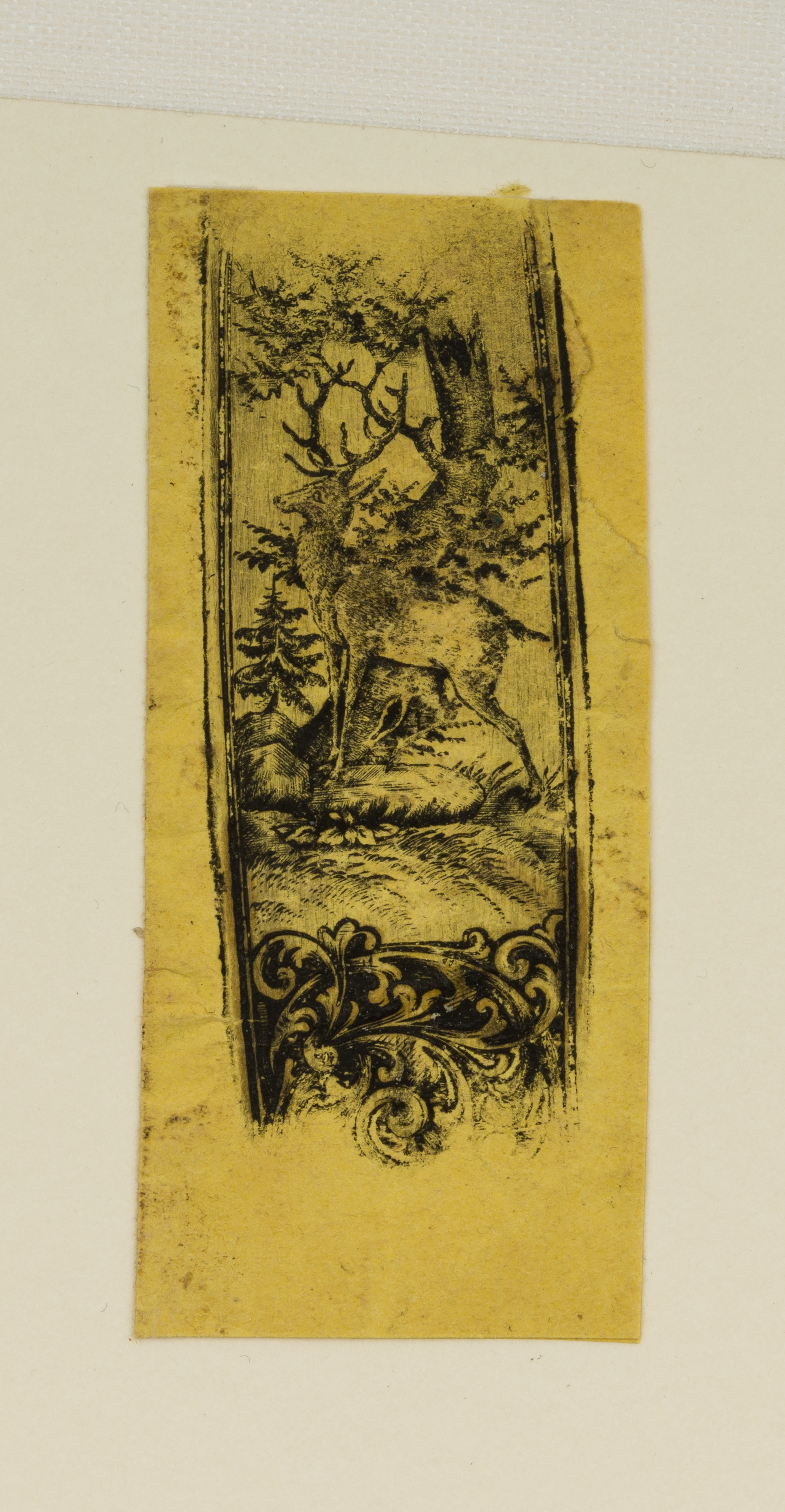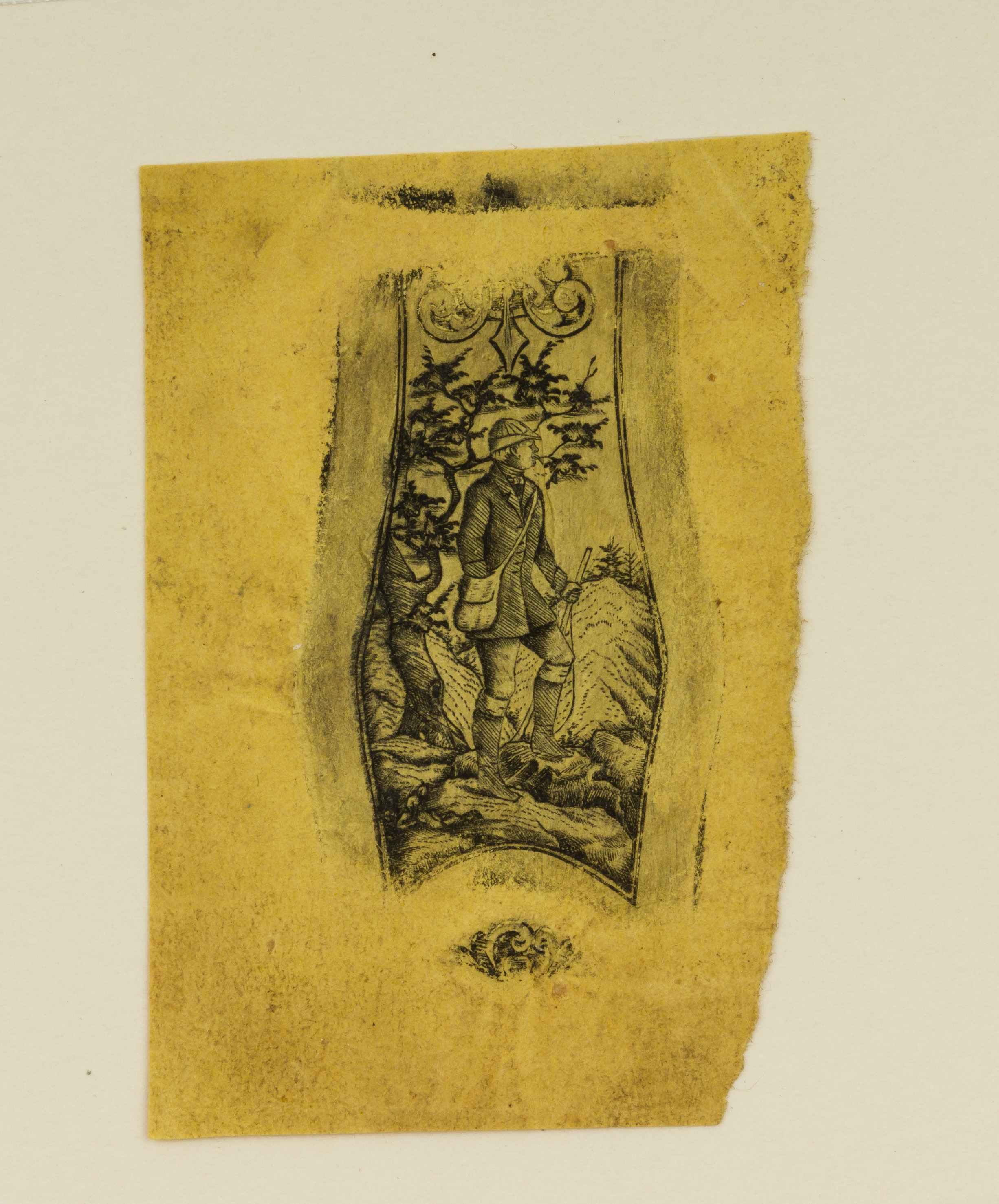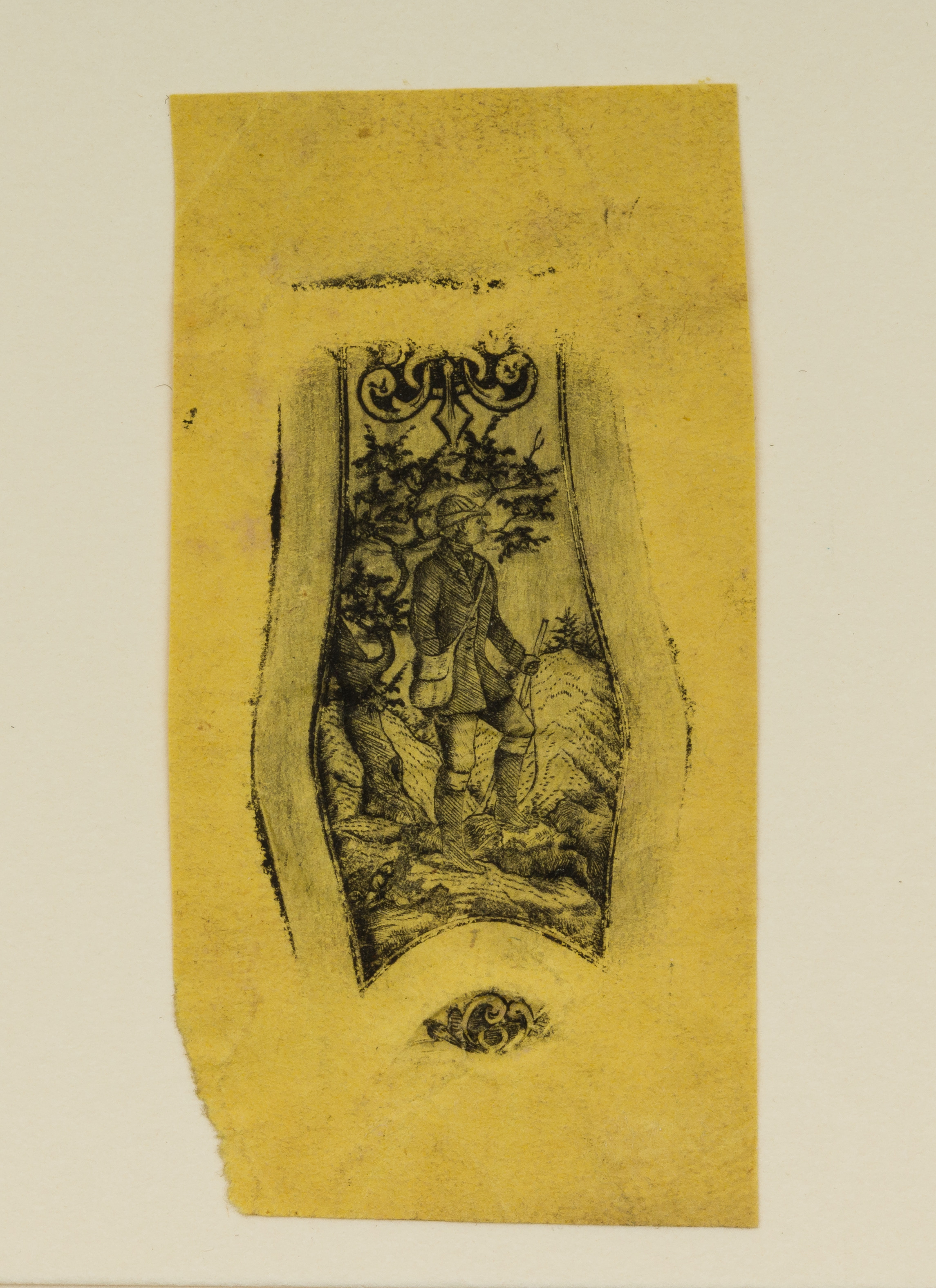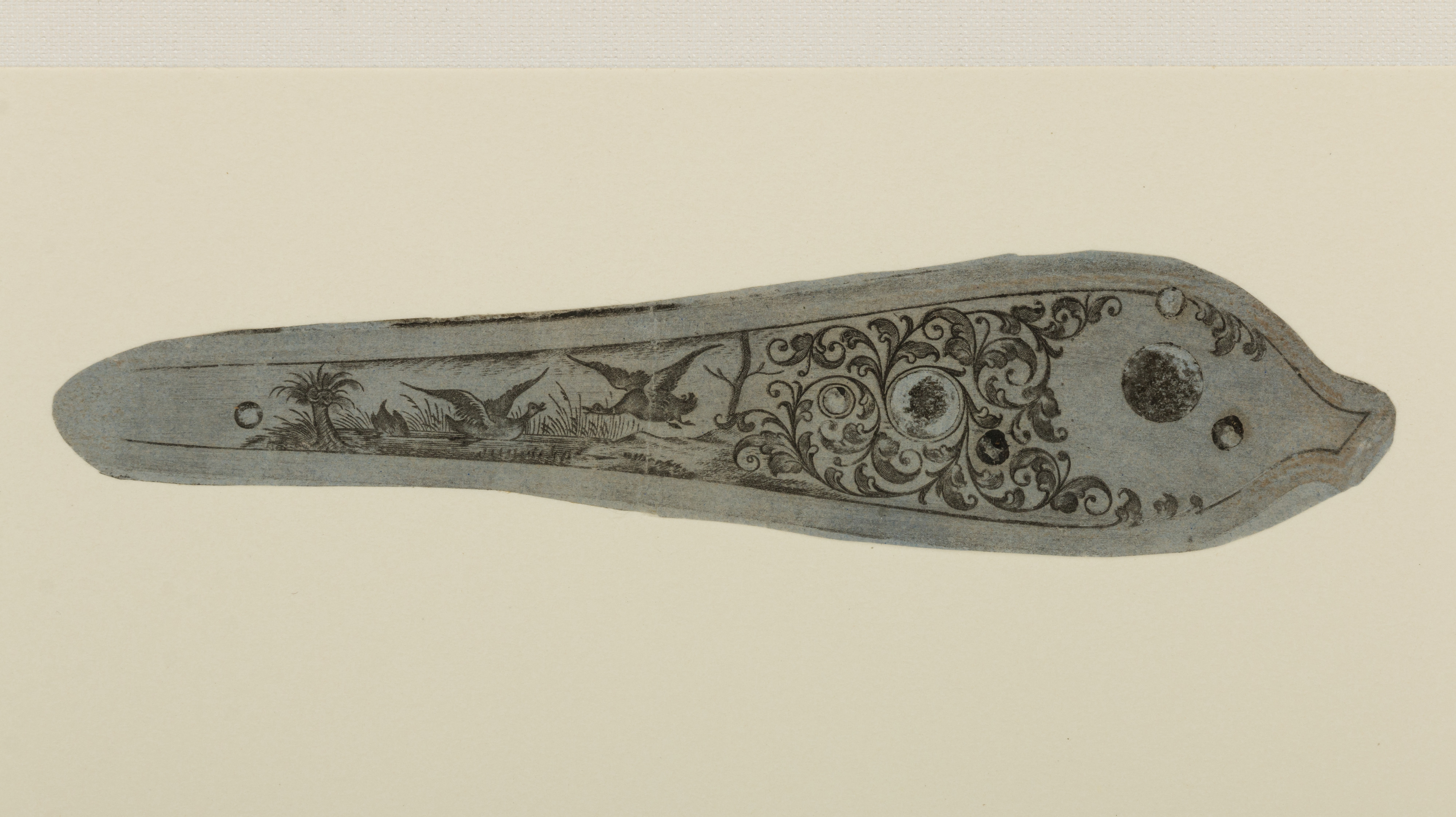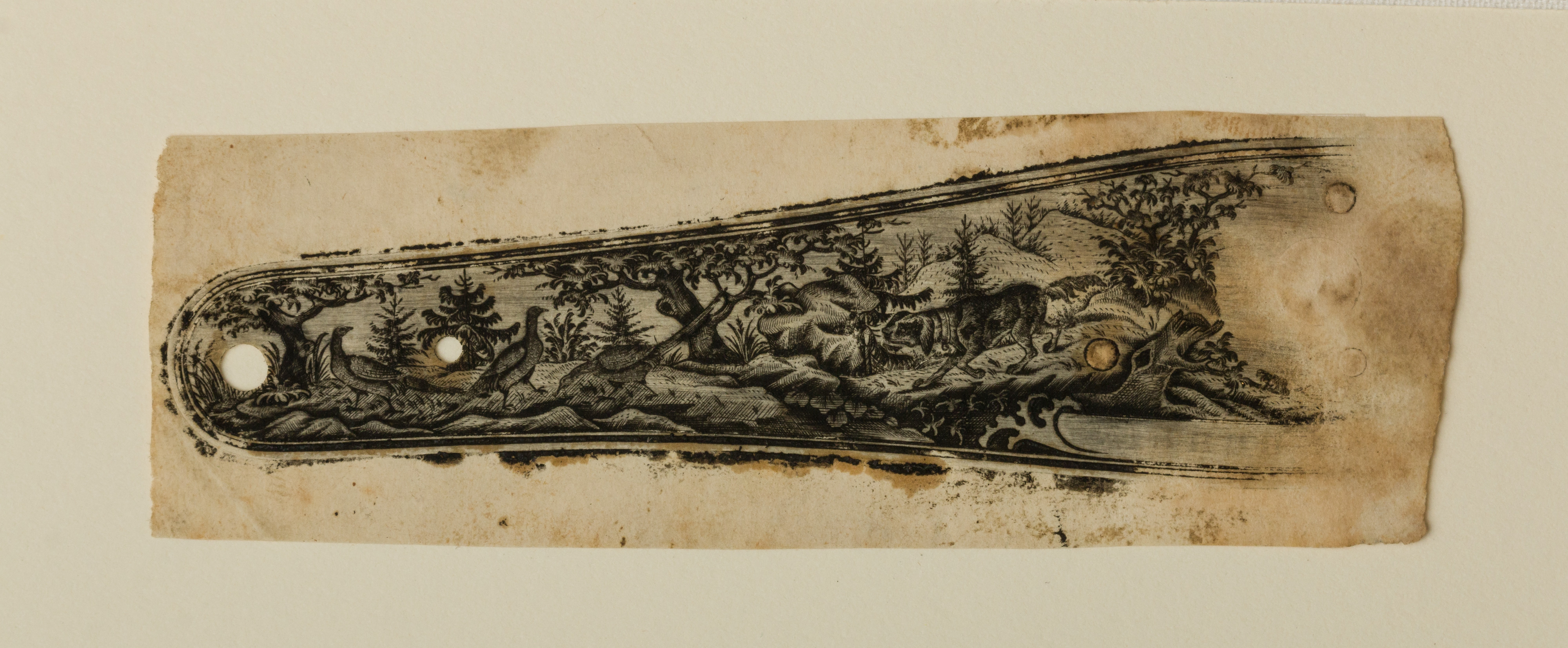Twenty-Five Inked Impressions (or "Pulls") of Engraved Firearms Ornament
2002.233.2–24, .26: Gustave Young American, born Prussia
2002.233.25: Ernst Moritz German
Not on view
This group of twenty-five pulls record the decoration of firearms engraved by the famous German-American artist Gustave Young, and includes one pull taken from the left action of a counter plate engraved in the 1840s by Ernst Moritz, who trained Young in Zella, Thuringia, Germany. The pulls include impressions taken from lockplates, receivers, barrel tangs, hammers, and other metal components engraved with scrollwork and hunting scenes.
Young ranks among the most well-known nineteenth-century engravers of American firearms, and is today most recognized for his work with Colt. He immigrated to the United States from Germany in 1852, engraving for Colt from 1853–58 and working as Colt’s primary engraving contractor from 1855–58 (see acc. nos. 2002.233.2–.26; 2003.521; 2009.330; 2010.481a–l). He became a naturalized citizen in 1858. After a hiatus in Germany he rejoined Colt in the early 1860s. Young also engraved for the New Haven Arms Company, Smith & Wesson, as well as other arms makers.
The Museum’s pulls by Young, and indeed all of Young’s engraved scrollwork designs, reflect the artist’s northern European roots. Young is believed to have trained under the master Ernst Moritz in Zella and the pull depicting a stumbling hunter amidst scrollwork (acc. no. 2002.233.25), previously attributed to Young, is in fact singed by Moritz, testifying to the similarity of their styles. Young’s work also takes inspiration from the influential pattern books of Gustav Ernst (see Acc. No. 2002.233.1a–j) and the Belgian artist Charles Claesen’s Recueil d’ornements et de sujets pour etre appliques a l’ornamentation des armes d’apres les dessins pircipaux artistes (1856), among other sources.
Due to rights restrictions, this image cannot be enlarged, viewed at full screen, or downloaded.
This artwork is meant to be viewed from right to left. Scroll left to view more.
